
Hey guys, Nikki with posh dog knee braces here. So, first of all I can’t stress enough the need to do some form of physical therapy. We send every patient home with a 12 week recovery calendar and exercises, however, we need you to keep those up for the full 9 months. Whether you find a holistic or physical therapy clinic to help you with water treadmill or PT, you need to keep you dog active in some way.
Lack of activity will cause a joint to “lock up” after the scar tissue has formed, meaning there is not going to be the same amount of range of motion there. There also can be loss of muscle. The brace alone is not enough to build muscle, you will need to keep walking your dog, and doing some form of exercise program. This is needed whether you do surgery, Conservative management, or bracing. Doing nothing will result in loss of muscle, loss of range of motion, and most likely arthritis and pain down the road.
We have a lovely list of holistic veterinarians and rehab clinics around the US and in Canada, so reach out if you are struggling to find a clinic. The clinics on our list are partners with posh, and know how to treat our patients, as well as measure and fit the brace if needed. We do have some things we can have you do from home as well, if PT is just not in the budget. I am happy with walks, simple exercises, and passive range of motion.
What is PROM? This is you gently bending and flexing the knee, as well as the hip. I have videos we send to you on how to do this stretching, but this is key to keep flexibility in the joint, and not end up with lack of movement there.
Please let us know if you have any questions, poshdogkneebrace.com or visit our Facebook Page. Thanks!
Today I want to discuss a popular topic, and that is early spay and neutering, and the correlation with ligament tears. Now, we are not saying that you should not fix your dog, only the reasons that you should wait until the appropriate age (depending on breed) to do so.
For most breeds, especially our giant breeds, we need to wait 12-18 months, to give the hormones a chance to work, and for our bones to finish growing. The Femur and tibia can take up to 14 months to finish growing, and if we take away the hormones too early, then it can cause these bones to grow longer than they should, thus altering the knee angle, and putting too much pressure on the knee, hips, and spine.
In recent studies, it is shown that dogs being fixed too early are 2 times more likely to have a CCL tear, and 3 times more likely to develop Luxating patella issues. Also, in a closed study it was shown that 97% of patients getting hydrotherapy for hip dysplasia had been spayed or neutered before 1 year of age.
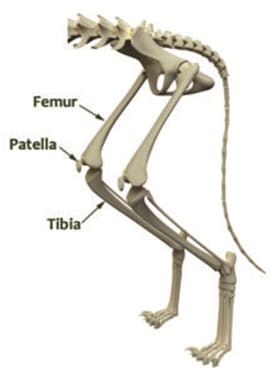
Looking for more information? You can reach out to us through our contact form or Facebook page.
Read reviews check out our Google Reviews online. Click Here
Hi guys, this is Nikki, lead veterinary technician with Posh Dog Knee Braces. Today, let’s discus osteoarthritis (OA) in dogs. Osteoarthritis is the most common form of arthritis in dogs, affecting about 25% of our dog populations. This is a chronic, not acute, disease that is due to loss of joint cartilage (our buffers), thickening of the joint, and bone formation around the joint leading to pain and limping. A lot of our OA patients have other developmental issues or disease, which predisposes them to having OA. This includes Cruciate disease, hip dysplasia, elbow dysplasia, OCD, patella luxation.
Sometimes, there may not be a reason that this occurs, and a patient just develops for no known reason. Some factors that can make this worse include obesity, gender, breed, exercise, and diet.
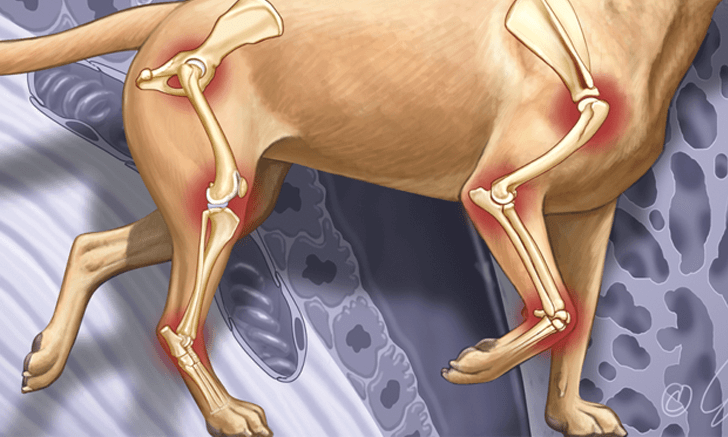
Signs of OA are sometimes reluctance to walk or exercise, acting stiff, limping, bunny hoping while running. Pain on palpation, possible aggression or discomfort is also usually present. They hurt and ache.
This is why it is always good to have an xray with limping patients over 6 years old, to rule out other things that can cause limping such as OA.
Treatment of OA includes weight and diet control, such as feeding Raw diet or diets with better protein, less carbs. Limiting the higher impact activities, such as running or jumping, replace with leash walks and range of motion activities. Physical therapy can really help build back those lost muscles, such as swimming. Laser therapy can also really help.
Supplements with fatty acids, such as fish oils, or green lipped muscle have shown to really improve quality. Adequan injections are one of the only leading products right now specifically formulated to fight OA, and prevent things from getting worse, I strongly recommend. Bracing may also be needed, to help alleviate the pressure on the joint, and act as a support and shock absorber, especially if it was due to CCL disease. Bracing may also help build back lost muscle, and alleviate the pain with walks.
Lastly, some form of anti-inflammatory may be recommended, but there are several natural anti-inflammatories that may be tummy safe, such as CBD oil or white willow bark.
Dogs that have undergone surgery, such as TPLO, have been shown in many studies to have more 77% more OA just 8 weeks post op than before on radiographs. So, if a patient has had TPLO, there is a much higher chance that dog will develop arthritis later on.
Thanks, and please visit poshdogkneebrace.com with any questions, or visit our Facebook page we are happy to help!
Read reviews check out our Google Reviews online. Click Here
Hey guys, this is Nikki, lead veterinary technician with Posh Dog Knee Braces. Today, lets discuss weight management in our spayed and neutered pups. It is well known that spaying and neutering, after a certain safe age, is recommended by almost every veterinarian. It is very important in the prevention of overpopulation, and other health concerns, however, it also predisposes our pups to obesity. Unfortunately, many vets are so quick to schedule your dog for surgery, and there is simply no information given to the owners as far as where to go now.
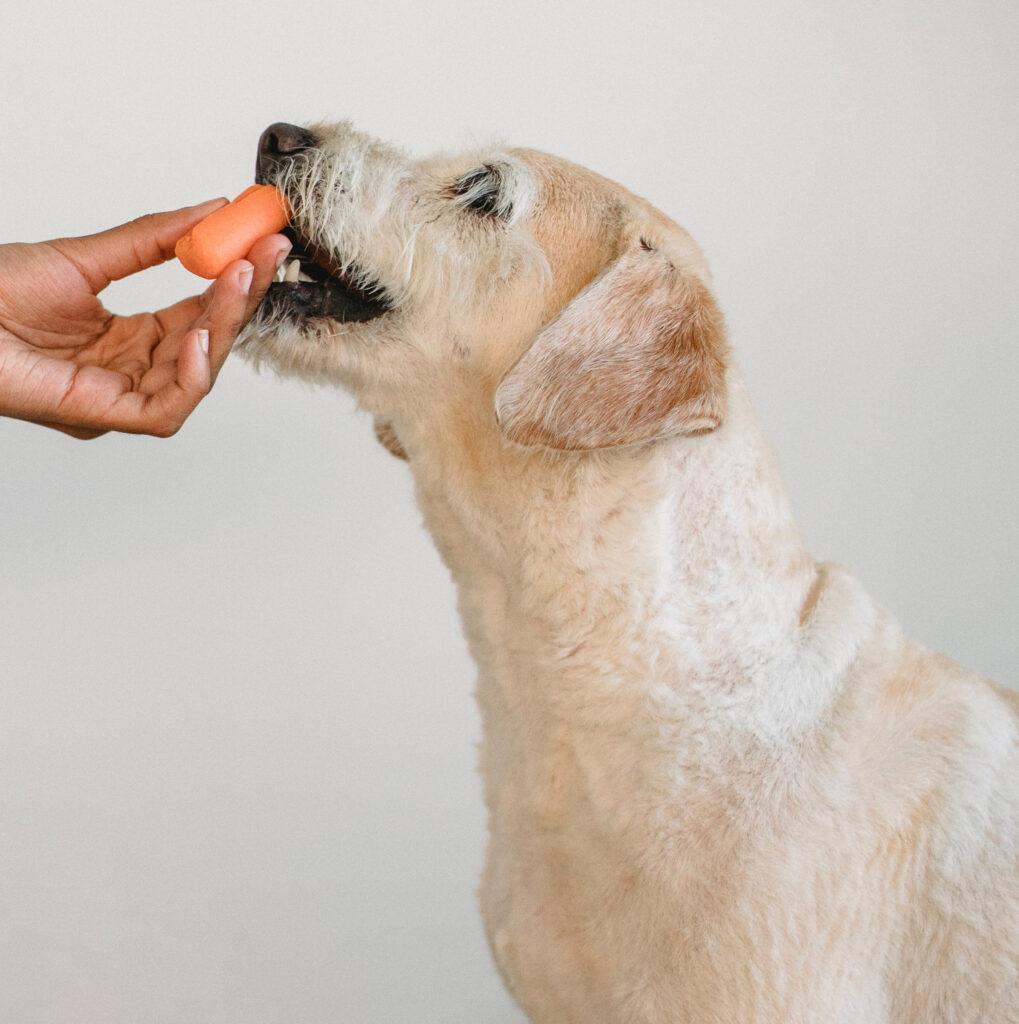
So, now we have this relatively healthy dog, young and probably more active, and we just took away the hormones that helped keep their weight in check. Post spay and neuter, their metabolic energy decreases significantly. This means that we need to also be cutting back the calories, by at least 25%. The other issue, especially with females, is that the hormone estrogen helps to keep their appetite at bay. Taking this hormone away can give your dog an increase in appetite, which is bad in a patient that needs to decrease the calories taken in per day.
So, now you go back in for your annual checkup, to find your baby has gained weight. The veterinarian possibly tells you that your dog needs to go on a weight loss diet, or be given less food per day. So, now you have a dog that just went through major hormonal changes, and has increased food cravings, yet you are feeding them barely any food.
Sound familiar? This equals out to an unhappy dog, and in return and unhappy owner. So, what is the solution, because it is also essential that we spay and neuter to be good pet parents, and do our part to prevent overpopulation.
This is where it is time to get proactive. Feel free to include your veterinarian in your plan, as you will need a way to weigh your dog every 2-4 weeks to check their weight. The good news is this is free😊 Now, it is time to implement the proper spay and neuter diet. For those that feed a raw diet already, you should not need to make any real changes.
The key is to increase protein and fiber, but keep in mind it needs to be healthy fiber. There are a few expensive brand foods marketed to spayed and neutered pets that the first ingredient is chicken by product. Double yuck! Just keep in mind that carbs will not help with weight loss. Foods with lots of rice for example are not meant for weight loss. It may be bland, but it will cause weight gain.
Try discussing with your veterinarian before you plan to spay or neuter, ask them to help you develop a proper diet to keep your dog healthy for years to come! This also will help prevent issues with joints potentially in the future.
Please let me know if you have any questions, you can contact us through our contact form or visit us on our Facebook page.
Read reviews check out our Google Reviews online. Click Here
Hey guys, this is Nikki, Lead Veterinary technician with Posh Dog Knee Braces. So, today I would like to talk about feeding raw diets, pros cons and why it has been clinically proven. First off, studies show that puppies that are raw fed starting at 8 weeks old have a significant decrease in their chances of Atopic dermatitis, and much less chance of developing obesity and cholesterol/glucose issues later on, such as diabetes. They also have an increased resistance to roundworms, which is great news. There is also shinier coats, healthy skin, cleaner teeth, more energy, smaller stools, and most important is healthy weight.
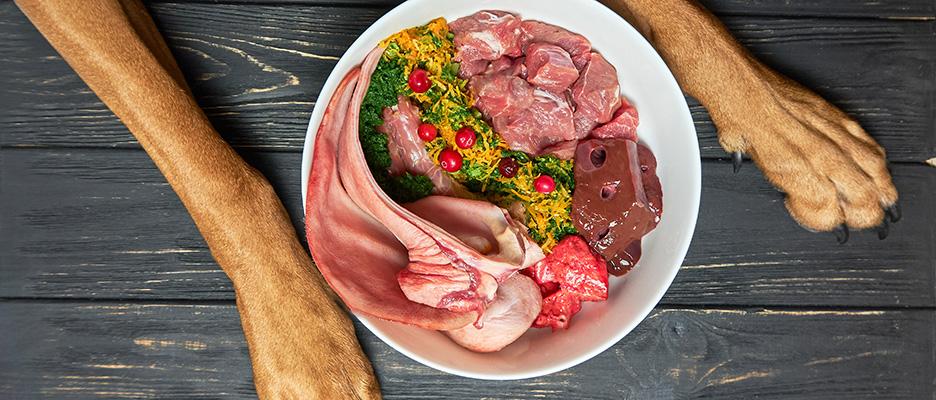
It has been shown to be a great support for joint health, so dogs with CCL tears! Crushed bone provides calcium, phosphorus, glucosamine, chondroitin, collagen, and marrow. This also helps immune systems!
The biggest questions we hearis, Is it safe to feed or dog a raw diet feed? Well, this is a great question. It depends on how you are raw feeding. Some meat may have chemical contaminants, microbial pathogens such as salmonella or e. colli, or there is the issue of feeding whole bones, or unbalanced diet. Bones if not ground properly, or supervised, can cause impactions, or gastric tears, fractures on teeth, etc. So, it is very important if you choose to Raw feed, please do your homework.
What is raw diet food? Typically, this includes muscle meat (not by products), bones whole or ground (I prefer ground), organ meat, raw egg, vegetables, fruit, some probiotics. This can be either via homemade diet, or via pre-made packages. The nice thing about purchasing packaged raw food is that they must provide cleansing methods to prevent contaminations, and grind down any bone material, so it is a bit safer.
There are many companies that can provide frozen raw diets for your pup, just make sure to look at ingredients to ensure they include things that your dog should be eating. One good thing about feeding frozen raw already prepared, is most will have supplements your dog needs already as a part of the diet.
So, whether you feed kibble currently or raw, your dog’s diet is a big decision. We all know that dogs were not meant to eat things like wheat, corn, and soy. Some carbohydrates are required for energy, so there needs to be a good balance. Raw feeding is a huge life change, and can sometimes not be as budget friendly as commercial diets, so that is another thing to consider before making the change. I am not trying to sway you either way, just giving you all the facts on both sides. Let us know if you have any questions, send us a message through our contact form or visit our Facebook page.
Read reviews check out our Google Reviews online. Click Here
Hey guys, this is Nikki, Lead Veterinary technician with Posh Dog Knee Braces. So, today I would like to talk about probiotics for your dog. Let’s face it, we have all had a dog with diarrhea or gastritis at one point, and it is not fun. Weather you have a new puppy, and are switching to a better quality puppy food, or a dog that maybe likes to dumpster dive, or one that licks out of that gross water puddle on your walk, probiotics may be a good option for you.
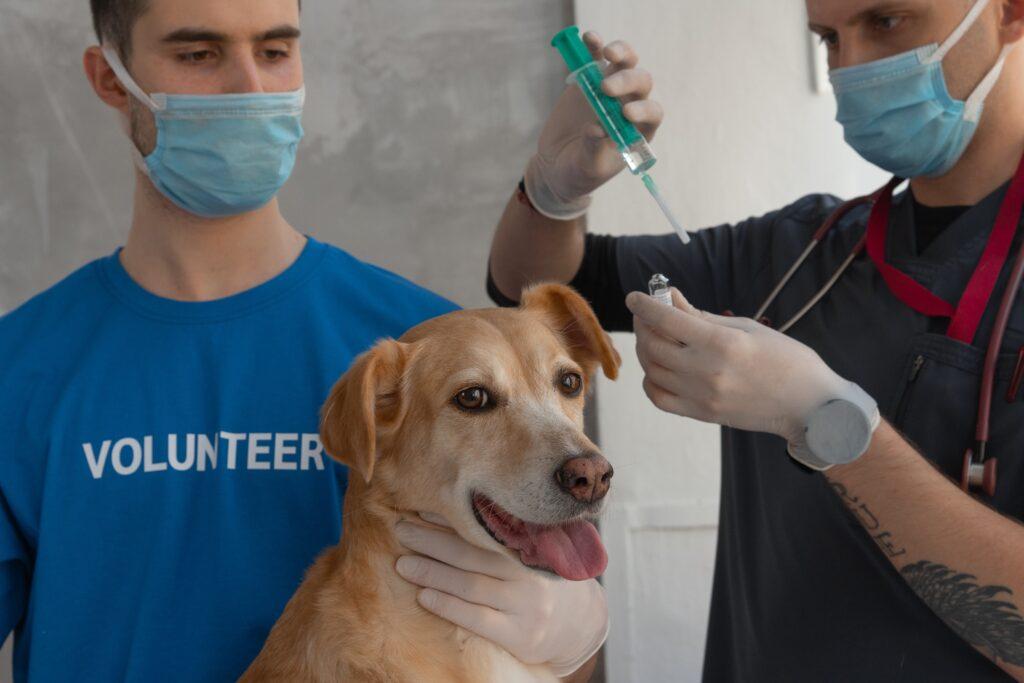
They help with diarrhea, intestinal upset, and can also help with dog allergies. If you have a female dog, they may also help in countering UTI’s, or even anxiety. Some dog food manufacturers are getting on the probiotic train, and may already be adding this to their diet, especially some of the Raw food diets out there.
I like to give my dog probiotics proactively, such as before I leave on a trip, if there will be a petsitter coming. That is a stressful event, and I don’t need my dog to get a stressful tummy, or anxiety. They can also be given as a daily part of long-term health.
Did you know that 70% of your dog’s immune system is their GI tract? It goes the same for people in that sense. So, by taking care of your dog’s tummy, it makes for an easier transition if they need to take pain medications, supplements, stressful events coming up, or if they have acute diarrhea. I typically will give at least 7-10 day course for a dog with loose stool/diarrhea, or a new puppy. They can really help in prevention of stress colitis, and that very expensive veterinary visit that follows. You can also add a tablespoon of canned pumpkin along with the probiotics if treating diarrhea, such as a new puppy.
The good news is that there are lots of great probiotics available both by your veterinarian and online. I really like Fortiflora personally, by purina, however, Zesty Paws also has a really nice product. Just do your research, and make sure they have good reviews before purchasing. Let me know if you have any questions, poshdogkneebrace.com or you can visit our Facebook page.
Read reviews check out our Google Reviews online. Click Here
Hey guys, this is Nikki, lead veterinary technician with Posh Dog Knee Braces, and today let’s talk about pain in our dogs. I hear so often owners say they don’t feel their dog is in pain, or that they don’t know what to look for. Today I would like to cover things to look for, and how to see those subtle hints your dog is giving you.
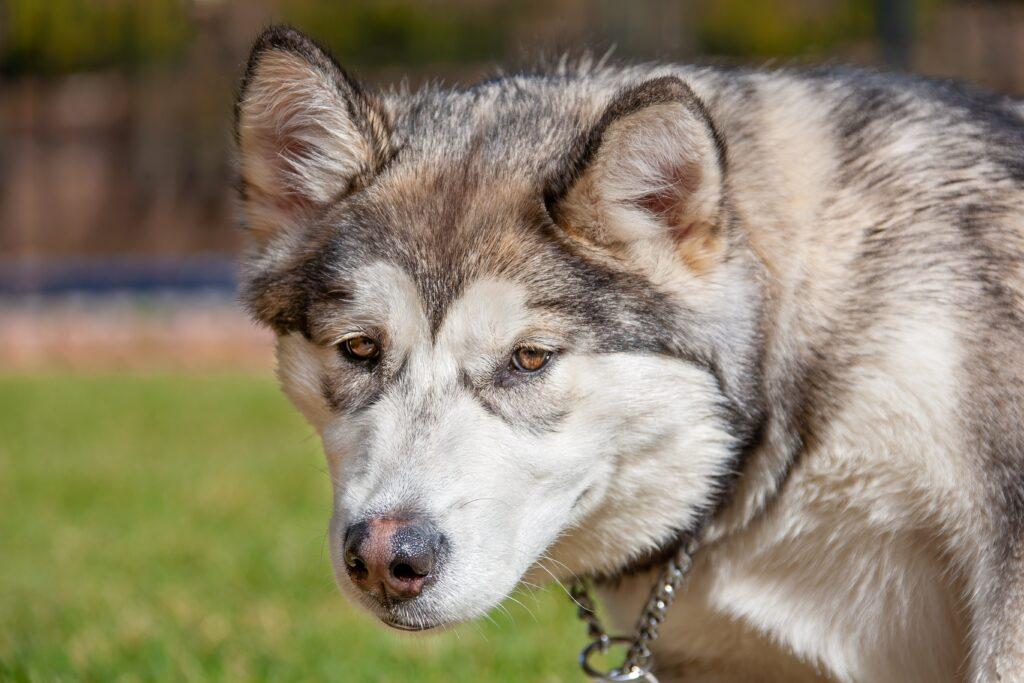
First, does your dog show any signs of panting, licking a certain area or paw/leg, pacing, trouble laying down or standing, chewing an area, legs shaking/body shaking, trouble standing from a laying position, holding a leg up, low whimpering/whining, growling or biting out of character, flinching when touched in an area? If you can answer yes to any of these symptoms, there is a good chance your dog is experiencing discomfort.
Dogs are extremely stoic, which means it is against their nature to show they are hurting outwardly like we would. A child is easy, they will hold the sore area, cry, and tell us what happened or that it hurts them. With our dogs, it can be a bit of a challenge to identify if they are in pain, and when to give the appropriate relief.
One of the most painful injuries to a dog is a CCL injury. This is significant agony, and your dog needs proper relief to get them through the first few weeks. There will be a lot of swelling present, and they may be cranky and sore during this time.
The first 2-3 weeks it is important to keep them on some form of anti-inflammatory. I hear a lot of people learn about nsaids, and immediately take their dog off of them within the first 1-2 weeks of an injury, stating their dog doesn’t look in pain any longer. I understand not wanting nsaids, however, I guarantee your dog is still in pain within the first 3 weeks of this injury. There are other alternatives to nsaids, which I go over in another blog, but that does not mean to withdraw all pain relief.
If suddenly taken off of pain relief, dogs (like people), will experience something called withdrawal. This means that their body is shocked with sudden pain, that has not been effectively treated, and it will be very difficult to get them feeling better without a strong med like a narcotic, something to calm and partially sedate them until pain management is achieved. So, please do not suddenly remove pain relief without having something else to start. If stopping an nsaid, you need to wait at least 24 hours before starting something like willow bark, to make sure the tummy does not get upset, and sometimes waiting for severe pain to stop before doing so might be best.
I always suggest resting 2-3 weeks, even if we are fast and you receive the brace in the first couple weeks of the acute injury, still wait a bit to begin walks. Give your pup time to get through the painful parts, then we can start bracing and PT. They will get better, and feel better, but it is our job as their owner to keep them comfortable. It will make all of our jobs much easier as we begin recovery.
Please let me know if you have any questions about how we can help your dog live a happy and pain-free life, poshdogkneebrace.com, or email me at poshintake1@gmail.com or visit our Facebook page.
Let Your Dog Recover With Our Custom Dog Knee Brace! We’ve Helped Thousands Of Dogs, Now We Want To Help Yours…
Read reviews check out our Google Reviews online. Click Here
Hey guys, Nikki lead veterinary technician with Posh Dog Knee Braces here. Today, lets discuss what a luxating patella is, and what that means for our pups. First off, a luxating patella simply means that the kneecap is not staying in the nice little happy groove that it was meant to on the femur. There is a groove, like a valley, cut out in the femur, that the kneecap is supposed to stay inside. A kneecap, or patella, is only supposed to glide in that grove up and down, as our pup bends the knee, just like our kneecaps do.
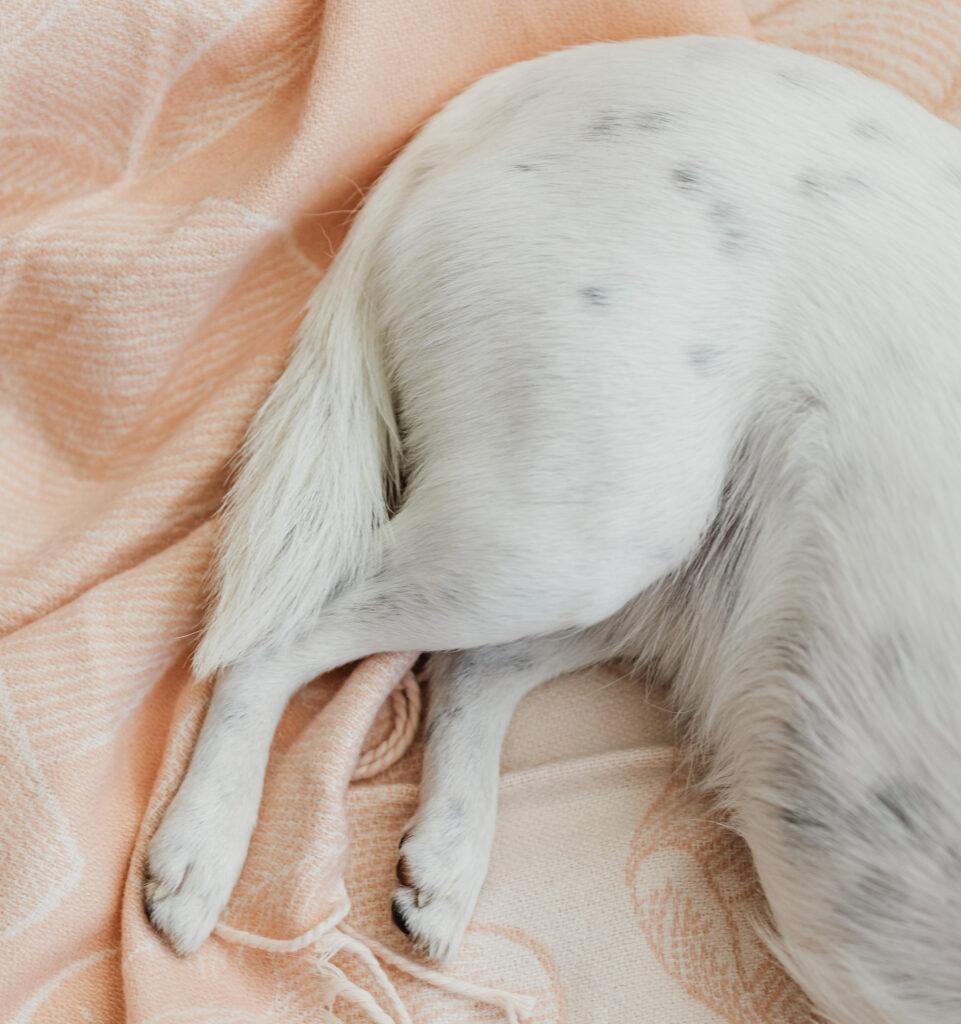
Unfortunately, due to sometimes genetics, this groove is too shallow for the kneecap to be happy and stay put. Also, if the patient has a bow to the femur or leg, the tendon that holds the kneecap in place, makes that kneecap straight up and down. Well, this causes an issue if our dog in fact has a crooked or bowed femur.
Certain breeds are more pre-disposed to this issue, and those would be most poodles, yorkies, chihuahua, bulldogs including smaller bulldog breeds, spaniels, terriers, and even some large breeds. Some of the signs we will see is intermittent hind limb skipping, lameness, stretching the leg out behind them. The more a kneecap moves out of place, the worse the issue gets.
There are 4 grades of lameness for these guys. Grade 1, the kneecap comes out of position, but is easily put back into place. This usually does not cause an issue for the dog, and minor symptoms. Grade 2 the kneecap shifts out of position with pressure, and can remain displaced until adjusted. There may be damage to cartilage on these from moving out of place. Grade 3, the kneecap is disjointed most of the time, but can be returned to normal position, however, once pressure is removed it luxates back out. Dogs will exibit some lameness, and cartilage damage. Grade 4, the kneecap is permanently dislodged from position, and can impair limb function.
Some dog’s with a luxating patella are more prone to having a CCL tear, and so we may suggest bracing them as a grade 2 or less, in order to help support the knee and take some pressure off the knee. Bracing will not hold the kneecap in place, such as for a grade 3 or 4, but will provide some stabilizing of the joint itself, helping to prevent the CCL tear.
Most grade 1 or 2 can be managed conservatively with supplements and rehab, possibly bracing. Unfortunately, if the grade is 3 or above, sometimes they do need surgery to correct the issue, such as deepening that groove the kneecap sits on, or moving the actual tibial bone laterally, which makes the kneecap sit much better in the groove.
If your dog does have surgery, it is recommended to brace post op, to restrict pressure on the knee, otherwise the patient must be restricted to a kennel or crate. PT is really helpful as well.
Thank you, and please visit Poshdogkneebrace.com with any questions about Luxating Patella or you can visit our Facebook page.
Read reviews check out our Google Reviews online. Click Here
Hey guys, this is Nikki, Lead Veterinary technician with Posh Dog Knee Braces. So, today I would like to talk about Laser Therapy for Dog’s with knee injuries ACL/CCL, or arthritis, and how it can help! First off, what is Laser therapy? Laser therapy is taking a simple beam of light to penetrate deep into the tissues and produce positive tissue changes. First used on hair regrowth, Laser therapy has been a growing success.
There are 2 types of treatment you will hear. Cold laser, which focuses on the surface of the skin, and blood circulation, while hot laser are for deeper tissues. Hot laser should only be done by medical professionals, as it is used for cutting and burning, as well as healing.
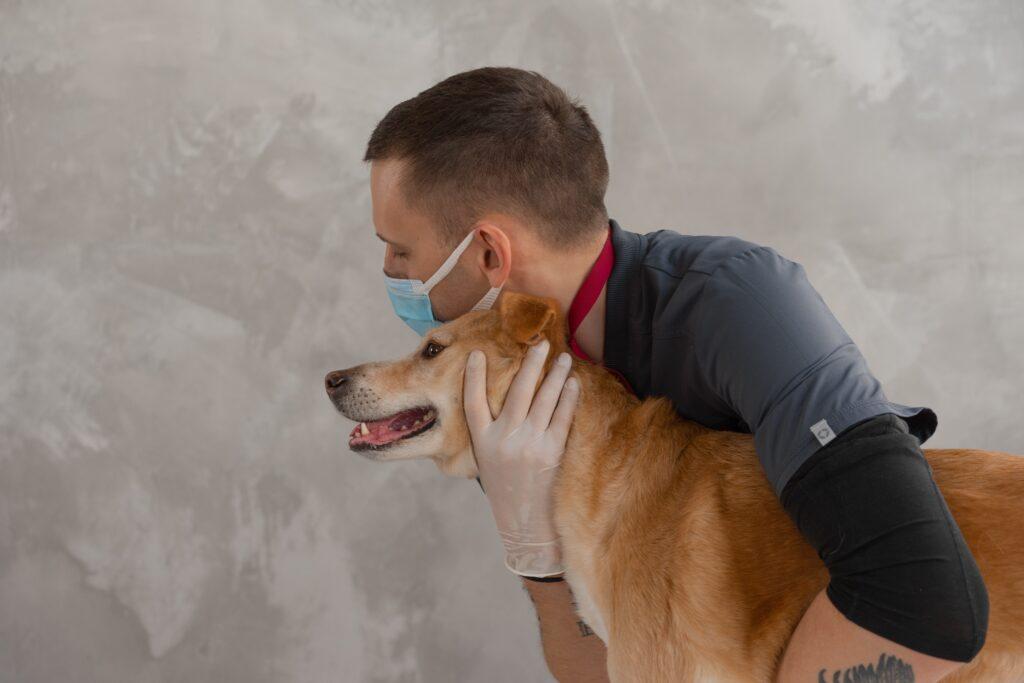
In most practices, we use low-level laser, or class IV laser therapy. Depending on the class of the laser, will tell you if it is something you can do from home or by a clinician. Quality laser equipment is very expensive, thus most will opt for therapy with their holistic vet, chiropractor, or veterinarian.
So, how do dogs react to having laser therapy done? They find it very relaxing. Laser therapy releases endorphins, so dogs usually find it relaxing and positive. Another benefit, is that your dog will not need to be sedated for laser, they can be resting and wide awake. There is no need to clip the hair away either, like other treatments. There is usually no side effects, the type of lasers used should not cause any burns to the skin.
So how will this help a dog with a ccl tear? Cold laser therapy for dogs with cruciate ligament injuries, restore health to damaged tissue cells by stimulating their ability to grow and survive, and heal naturally. It helps relieve pain and limping as well. If used with conjunction with an orthotic (brace) this would give your pup a good chance of fully recovering with less pain.
Please call or email with any questions! Poshintake1@gmail.com, or 509-412-3065. You can also leave us a message on our contact form or visit our Facebook page.
Thanks!
Read reviews check out our Google Reviews online. Click Here
This is about half of the people I speak with on a daily basis. Puppies are wonderful, and really do bring our families and other dogs joy, but sometimes that comes with a cost. Whether you bring home the puppy before an injury on your older dog, or after, we still need to be careful when they play. Rough play, such as puppy jumping on their back or playing tug of war, can result in new injuries, or aggravating an older injury. Puppies bring on a youthful playing with our older dogs, which is fun to watch, however, it can encourage injuries, so please be careful.
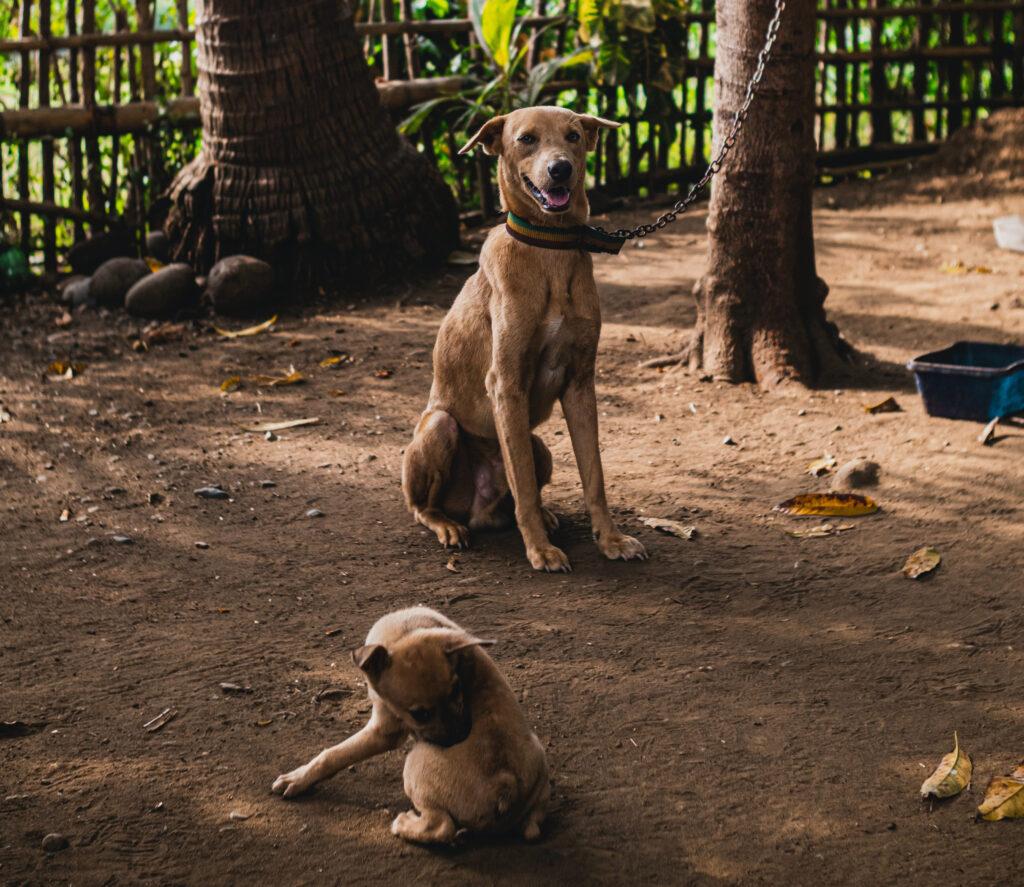
Choose a breed carefully. If, for example, you have a small breed older animal, and bring home a large breed puppy, there is going to be some potential to be injured. Puppies, as part of play, will try to jump on the other dog’s back. This is their natural tendencies trying to establish dominance. Well, if your poor older animal has hip or knee issues, you can imagine that this may not be the best case scenario. Thus, it is important, to only let them have supervised play times, and not be left alone to rough play all the time.
This is especially true if your other pet has a recovering knee injury. Not only is it going to be tough to get that knee to recover with a puppy wanting to play, but the puppy will also be very curious about this really cool chew toy on their leg! So, again, supervision at all times is going to be needed. I’m not saying you can’t get a new puppy, but think the scenarios through before you adopt. Or, perhaps look into adopting an older doggy instead of a new puppy.
Puppies are going to be growing and teething for at least a year, if not more. This means their energy will be high, and your injured dog’s tolerance for this may be low. Make sure you have the means to keep them separated when you are not home or there to supervise, because that would not be otherwise fair to your older injured dog.
Get lots of fun distracting toys for the puppy to play with (and don’t forget your older pup!). This really helps keep them distracted, and happy. If your older dog has a posh brace on, to support a CCL injury, it is ok to have them play for a little while with the puppy, but only directly supervised. The brace does act as a shock absorber, so a little play is ok, but no running or jumping while playing. My puppy likes to stand up on her back legs to “box” with my other dog. This would not go over well if my other dog had an injured leg.
Again, feel free to check us out at poshdogkneebrace.com, or email us through our contact form or visit us on our Facebook page.
Read reviews check out our Google Reviews online. Click Here
Hey guys, this is Nikki, Lead Veterinary technician with Posh Dog Knee Braces. Today let’s talk about puppies! Who doesn’t love puppies, right? All those little sharp teeth chewing on everything😊 Well, this is the best time to get your new puppy used to people and being handled.
First, never force your puppy to do something, or yell and be cross. The literally have a 30 second memory, so they just know mom or dad is yelling, and no idea what they did wrong. Never every hit your puppy, especially in the first few months of growing. Puppies have 3 very important learning times right around 8, 10, 15 weeks where they are the most sensitive and receptive to negative behavior from us. This is when we need to be really gently, soothing voice, and friendly with them, even if they just chewed up your favorite pair of shoes!

Start with a treat, or a few treats, that your puppy likes. Puppies want to please us, and are very food driven! Even peanut butter smeared on the wall for them to lick is great. Offer them a treat in one hand, and with the other hand gently touch their ears, massaging the tips, and work down to their toes. Spend at least 5 minutes a day giving them treats in replacement of you touching them on toes/feet/legs/ and ears. Especially if you have a floppy eared dog like I do, as they can be prone to ear infections.
This will really be helpful for you in the future. They will trust you and others to touch them, or for the veterinarian to complete their exam. I personally love puppy training classes, as they socialize your dog to other people, dogs, and get them even more bonded to your family in a safe environment. Little dogs tend to be nervous as it is, and can be nippy with toe nail trims. This can all be avoided if you take the time as a puppy to get them used to touch and other people.
Once your puppy is used to you touching their feet without flinching them back, start bringing out the toe nail clippers. Just let puppy sniff, and give them a treat. Then maybe try to do one nail, and treat right away. Do not force your dog to do all their toe nails at once, especially if they are afraid. This is a great way to make a toe nail fear biter, and cost you a lot in grooming fees.
Desensitization can be helpful now, because if your puppy grows up and unfortunately gets a CCL tear someday, putting something on their leg like our brace will be no problem, because you have set them up to succeed!
Feel free to email me at poshintake1@gmail.com with any questions, or visit us at poshdogkneebrace.com you can also check out our Facebook page.
Read reviews check out our Google Reviews online. Click Here
Genetics do factor in sometimes on whether our dogs will have a CCL tear or not. Such as, I don’t see tears as much in sporting breeds like springer spaniels or setters, but do in rotties and newfies. Not saying I have never had a sporting breed like springer or setter come in with an acute injury, but I don’t feel their genetically prone to the issue like other breeds are.
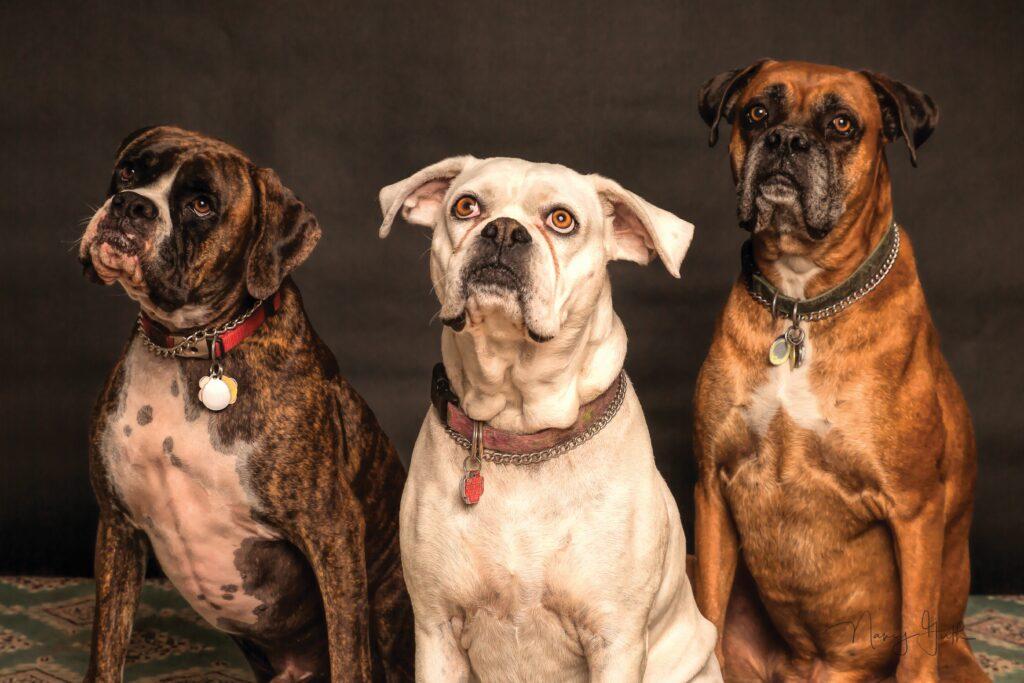
The following breeds have much higher chances of CCL injuries, including bilateral injuries. Mastiffs, Newfoundlands, akitas, St. Bernard’s, rottweilers, Chesapeake bay retrievers, American Staffordshire terrier, and laborador retrievers. Also Golden retrievers seem to also be affected more often that smaller breeds.
Toy breeds tend to have luxating patella issues, where the kneecap moves back and forth, thus causing concurrent CCL tears secondary to the LP issue. We do see a fair share of chihuahuas, maltese, shihtzu’s, and Pomeranians as well.
So what if your dog is on the list? What can we do? Well, there are a few things you can do. First off, don’t spay and neuter before they have reached maturity (~14 months), feed a breed appropriate diet with no bye products. Diet correlates to muscle and ligament growth so much, which is why it is so important to start your puppy out the right way, on a good diet. Preventing your dog from jumping in the air to play fetch, or turn corners too sharply.
Instead, roll the ball on the ground for them to run after. Getting them on a good bone supplement may help, we need to feed those growing ligaments all the goodies we can, and sometimes they need more than their food will provide.
Bones with marrow are great, bone broth is great, shark cartilage is good. There are many things you can give that are good for your pup. Taking your dog on regular leashed walks, and exercising them properly will also help. Especially with our more lazy breeds, you know who you are! 😊
Dogs with more bowing in the knee tend to also get tears more frequently, such as rottweilers and any staffy breeds. Again, try to keep these pups from jumping or rough play, as that can put stress on the joints.
Let us know if you have any questions, poshdogkneebrace.com, or email me on our contact form or visit our Facebook page.
Read reviews check out our Google Reviews online. Click Here
Today I want to talk about hair length, and if it is necessary to shave your dog for our our brace. For the measurement call, we need to be able to see all the bumps in the knee. The hair needs to be less than 1” in length.
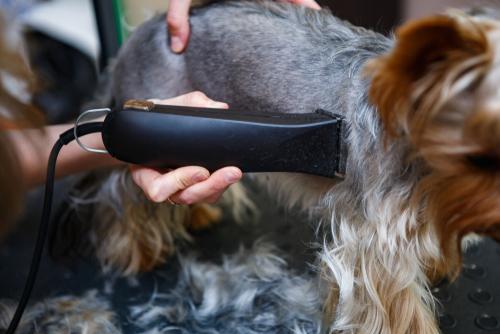
If you have a curly haired dog, you can try wetting down the hair in order to find the bumps. You will also need to make sure you can see those bumps and landmarks clearly for when you are fitting the brace.
If your dog has shorter hair on front of the leg, and feathering behind the thigh, you are probably ok. For dogs that have very long hair, like newfies or Great Pyraneese, they will need legs trimmed/shaved down to the ankle, otherwise we can’t see landmarks to help you measure. Let us know if you have any other questions, you can reach us at our contact page or visit our Facebook page.
Nikki, Posh Lead Veterinary Technician
Read reviews check out our Google Reviews online. Click Here
Today I would like to talk about recommended activity levels with a brace or CCL tear. It is still important to remember that this is not a race.
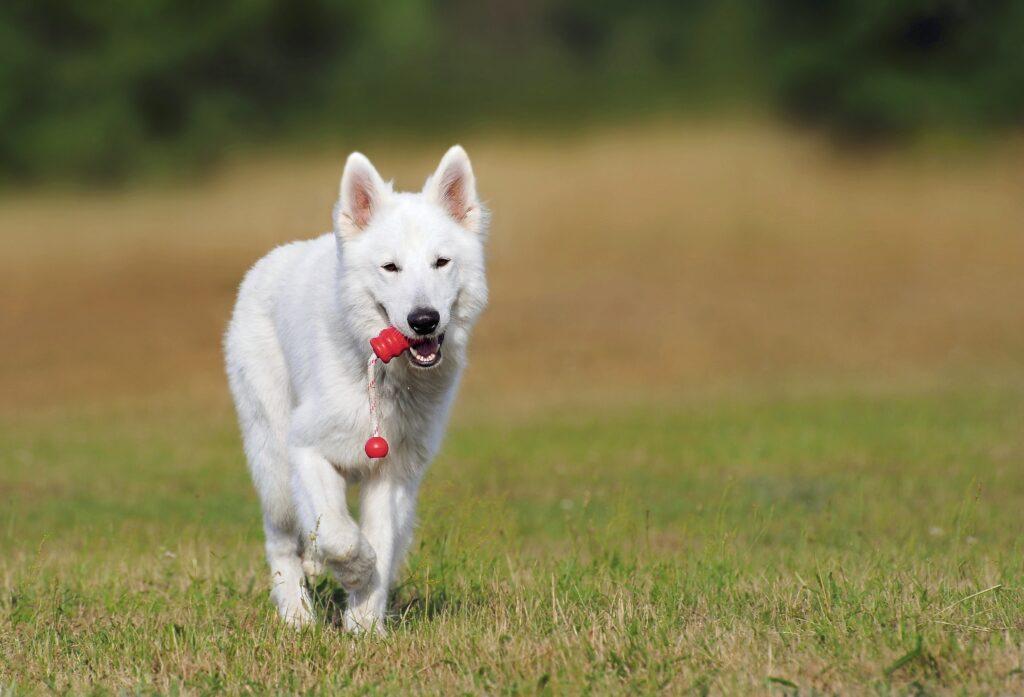
Initially, we start with walks and light physical therapy and massage. Gradually, we can increase activities, such as adding hills or inclines to the walk, sit stands, more muscle building activities.
It is not recommended to let your dog run off leash while in recovery. This can lead to injury of the other leg potentially. Braced walks are meant to be nice and slow, not a jog. The goal is to have your dog placing full weight down on his leg. If you walk or run too fast, they will skip and not place full weight on the leg.
We will get to a point where your pup can play off leash, but ask first, and take things slow. Feel free to email or send in a contact request with any questions about what levels of activity is right for your dog, we are happy to help! You can reach out to use through our contact form or visit us on our Facebook page.
Give Your Dog a Big Hug From Us!
Nikki, Posh Lead Veterinary Technician
Read reviews check out our Google Reviews online. Click Here
Today I want to discuss signs that your dog has a CCL tear, and if he or she needs a brace. First, obviously your poor dog is exhibiting signs of hind limb lameness. Now this can happen two ways. First, you hear a yelp, or see the injury, and have sudden onset lameness. This is about 50% of dogs, and is called an acute injury. Your pup will not use his or her leg, and is toe touching.
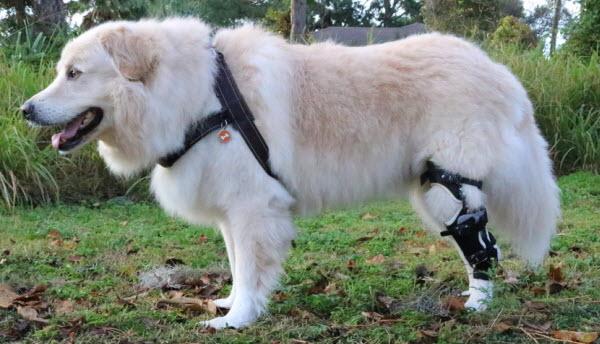
Second, you notice your dog limping on the hind leg after exercise, and after rest seems better. This goes on for a few weeks until you have a veterinarian diagnose the injury as a CCL full or partial tear. Some of these patients go a year or longer before getting to full limping. This is a chronic case, and usually degenerative.
We can help with either situation, as even a partial tear will keep re-injuring over and over until externally supported with a brace.
After a while you may notice a medial buttress, or a hard bump on the inside of the knee. This is a sign of cruciate injury as well.
No matter how long you wait, it is never going to be too late to brace your dog, as bracing will help stop the offloading that is happening, and we can start working on that thigh muscle to reverse the atrophy. Let us know if you have any further questions about this topic, and always feel free to send me a contact request, I am happy to chat with you and answer some of your questions you can reach out to me on our contact form or visit our Facebook Page.
Nikki, Posh Lead Veterinary Technician
Read reviews check out our Google Reviews online. Click Here